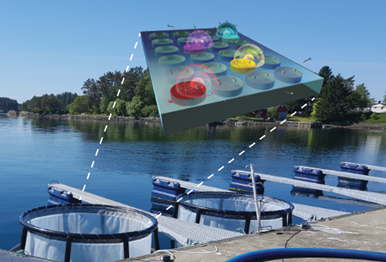Bacteria play pivotal roles in most chemical processes on our planet. Many bacterial species are motile, swimming using large appendices called flagella, and can bias their movement based on the sensing of chemical gradients, a behaviour known as chemotaxis. Over 50 years of research has thoroughly characterized the molecular mechanisms of bacterial motility and chemotaxis in a few model organisms. Yet, we are only just beginning to understand how bacteria leverage motility and chemotaxis to their advantage in natural environments. For example, we lack a broad understanding of what the ecologically relevant chemical signals are, and how the benefits of tracking these signals compares to the costs of motility and chemotaxis in terms of the use of cellular resources.
Using a combination of in situ tools (such as the ISCA, In Situ Chemotaxis Assay) and laboratory-based methods (microscopy and microfluidics), we focus on identifying the key compounds and key bacterial players that display chemotaxis through the water column. We also investigate the environmental conditions that regulate the level of motility and chemotaxis. For example, does the nutrient history experienced by bacteria change their chemotactic behaviour? For how long can bacteria sustain motile behaviour despite challenges such as energy limitation or predation? Ultimately, the answers to these questions will enable us to better characterize the consequences of chemotaxis for biogeochemical cycling and better predict the response of fragile ecosystems to changing conditions.
Funding: SNSF
